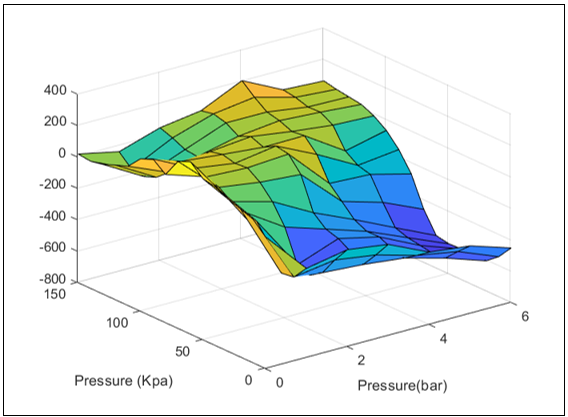Modeling and Optimization of Oil-in-Water Emulsions Treatment Using Ultrafiltration and Neural Networks
DOI:
https://doi.org/10.26438/ijsrcs.v12i3.192Keywords:
Oil separation, Oil-in-water emulsion (O/W), Membrane Ultrafiltration, Artificial Neural Network (ANN), ANN modeling, Process optimizationAbstract
In this study, the separation of oil from water in oil-in-water (O/W) emulsions was investigated using the ultrafiltration process and artificial neural network (ANN) modeling. The goal of this research was to assess the capabilities of the ANN model in predicting the performance of the ultrafiltration system and to assist in optimizing the separation process. The results indicate that the ANN model effectively predicted the system's behavior, leading to improved efficiency and enhanced adaptability of the oil-water separation system. The combination of ANN modeling with the ultrafiltration process holds significant potential for reducing operational costs and improving the quality of industrial wastewater treatment. Specifically, the accuracy of different ANN models used in this study, based on simulations and data evaluations under various conditions, was as follows: for a single hidden layer with 80 neurons, the prediction accuracy was 0.82; for a single hidden layer with 120 neurons, the accuracy was 0.80; for a network with two hidden layers [80, 40] neurons, the accuracy was 0.90; and for a network with two hidden layers [120, 50] neurons, the accuracy was 0.89. These results demonstrate the high accuracy of ANN models in predicting the behavior of the ultrafiltration system for oil-water separation, highlighting their effective application in optimizing industrial processes and reducing costs in wastewater treatment industries.
References
B. Jiang et al., “One-step modification of PVDF membrane with tannin-inspired highly hydrophilic and underwater superoleophobic coating for effective oil-in-water emulsion separation,” Separation and Purification Technology, Vol.255, p. 117724, 2021.
M. Wang et al., “Fabrication of a superhydrophilic PVDF membrane with excellent chemical and mechanical stability for highly efficient emulsion separation,” Separation and Purification Technology , Vol.251, pp.117408, 2020.
C. Zuo et al., “Co-deposition of pyrogallol/polyethyleneimine on polymer membranes for highly efficient treatment of oil-in-water emulsion,” Separation and Purification Technology, Vol.267, p. 118660, 2021.
X. Hu, E. Békássy-Molnár, G. J. H. J. o. I. Vatai, and Chemistry, “Characterization of gel concentration in ultrafiltration of oil-in-water emulsion,” Hungarian Journal of Industry and Chemistry, Vol.31, Issue 1, pp. 47-52, 2002.
Y. Wang, T.-T. Hu, X.-L. Han, Y.-Q. Wang, and J.-D. J. C. J. o. P. S. Li, “Fabrication of Cu (OH) 2 nanowires blended poly (vinylidene fluoride) ultrafiltration membranes for oil-water separation,” Chinese Journal of Polymer Science, vol. 36, no. 5, pp. 612-619, 2018.
V. K. Vatanpour, T "Membrane filtration technologies for treating industrial wastewater: A review of ultrafiltration, microfiltration, and nanofiltration,” 2020.
R. W. Baker, "Membrane technology and applications,” John Wiley & Sons, 2023.
I. Goodfellow, Y. Bengio, A. Courville, and Y., "Bengio, Deep learning (no. 2),” MIT press Cambridge, 2016.
A. Krizhevsky, I. Sutskever, and G. E. J. A. i. n. i. p. s. Hinton, “Imagenet classification with deep convolutional neural networks,” Advances in neural information processing systems, Vol.25, 2012.
I. Goodfellow, Y. Bengio, and A. J. D. l. Courville, “Regularization for deep learning,” Deep learning, pp. 216-261, 2016.
K. He, X. Zhang, S. Ren, and J. Sun, “Deep residual learning for image recognition,” In Proceedings of the IEEE conference on computer vision and pattern recognition, pp. 770-778. 2016.
S. Hochreiter and J. J. N. c. Schmidhuber, “Long short-term memory,” Neural computation, Vol.9, no. 8, pp. 1735-1780, 1997.
"Application of artificial neural networks for ultrafiltration membrane fouling prediction: A state-of-the-art review,” 2021.
Y. LeCun, Y. Bengio, and G. J. n. Hinton, “Deep learning,” Vol.521, no. 7553, pp. 436-444, 2015.
"Real-time optimization of ultrafiltration process using neural networks " 2021.
R. Badrnezhad and B. Mirza, “Modeling and optimization of cross-flow ultrafiltration using hybrid neural network-genetic algorithm approach,” Journal of Industrial and Engineering Chemistry, Vol. 20, no. 2, pp. 528–543, Mar. 2014.
"Performance prediction of ultrafiltration membrane system using artificial neural networks and support vector machines " 2021.
Y. Sun et al., “Facile development of poly (tetrafluoride ethylene-r-vinylpyrrolidone) modified PVDF membrane with comprehensive antifouling property for highly-efficient challenging oil-in-water emulsions separation,” Journal of Membrane Science, Vol.584, pp. 161-172, 2019.
W. H. Abuwatfa, N. AlSawaftah, N. Darwish, W. G. Pitt, and G. A. J. M. Husseini, “A review on membrane fouling prediction using artificial neural networks (ANNs),” Membranes, Vol.13, no. 7, p. 685, 2023.
N. D. Viet and A. J. J. o. C. P. Jang, “Machine learning-based real-time prediction of micropollutant behaviour in forward osmosis membrane (waste) water treatment,” ournal of Cleaner Production , Vol.389, p. 136023, 2023.
R. Badrnezhad, B. J. J. o. I. Mirza, and E. Chemistry, “Modeling and optimization of cross-flow ultrafiltration using hybrid neural network-genetic algorithm approach,” Journal of Industrial and Engineering Chemistry, Vol.20, no. 2, pp. 528-543, 2014.
S.-N. Nam et al., “Modeling sulfamethoxazole removal by pump-less in-series forward osmosis–ultrafiltration hybrid processes using artificial neural network, adaptive neuro-fuzzy inference system, and support vector machine,” Chemical Engineering Journal, Vol.474, pp. 145821, 2023.

Downloads
Published
How to Cite
Issue
Section
License
Copyright (c) 2025 Sayyede Yasmin Fatemeh Tayyeb, Mohammad Sadeghi, Mansour Kazemi Moghadam

This work is licensed under a Creative Commons Attribution 4.0 International License.
Authors contributing to this journal agree to publish their articles under the Creative Commons Attribution 4.0 International License, allowing third parties to share their work (copy, distribute, transmit) and to adapt it, under the condition that the authors are given credit and that in the event of reuse or distribution, the terms of this license are made clear.





